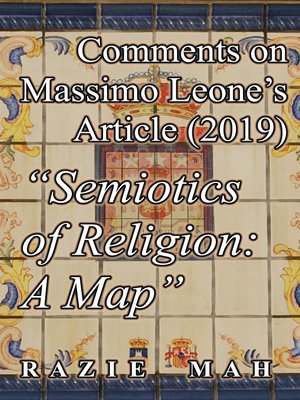Comments on Massimo Leone's Article (2019) "Semiotics of Religion
ebook ∣ A Map": Re-Articulations, #10 · Re-Articulations
By Razie Mah

Sign up to save your library
With an OverDrive account, you can save your favorite libraries for at-a-glance information about availability. Find out more about OverDrive accounts.
Find this title in Libby, the library reading app by OverDrive.



Search for a digital library with this title
Title found at these libraries:
| Library Name | Distance |
|---|---|
| Loading... |
Massimo Leone has published articles on the semiotics of religion since 2004, writing in both Italian and English. Topics encompass conversion, identity, agency, communication, revelation, subjectivity, fundamentalism, culture, amazement, ignorance, law, mediation and typology. Recent work includes a two-volume work, titled Grammars of Infinity. A forthcoming collaboration is titled Mediation and Immediacy: The Semiotic Turn in the Study of Religion (Semiotics of Religion Series, Berlin: Walter de Gruyter).
This article divides into two compartments. The initial fourth offers two models, one sketched over the other. The first depicts religion and language at the crossroads of nature and culture. The second model offers human cognition of infinity as a driver in the manifestation of religion. Indeed, religions seek to paradoxically produce finite simulacra of infinitude.
The latter three-fourths covers applications.
What is a "simulacra"?
The word touches base with the potential underlying the actuality of infinity as "cause". The word combines icon, index, symbol and consilience.
Does the maze of semiosis provide a fundamental topological diagram of religious phenomena?
The author claims as much.
These comments begin by claiming that Leone attempts to build a model of religion compatible with empirio-schematic and positivist judgments. Then, these comments diagram the model using the category-based nested form. Rather than a maze, elements of Leone's argument fit into an interscope. This result surprises, since such association carries the implication that the model is not compatible with the empirio-schematic and positivist judgments.
Ah, such is the nature of semiotics.
Triadic relations do not support models that explain away phenomena.







